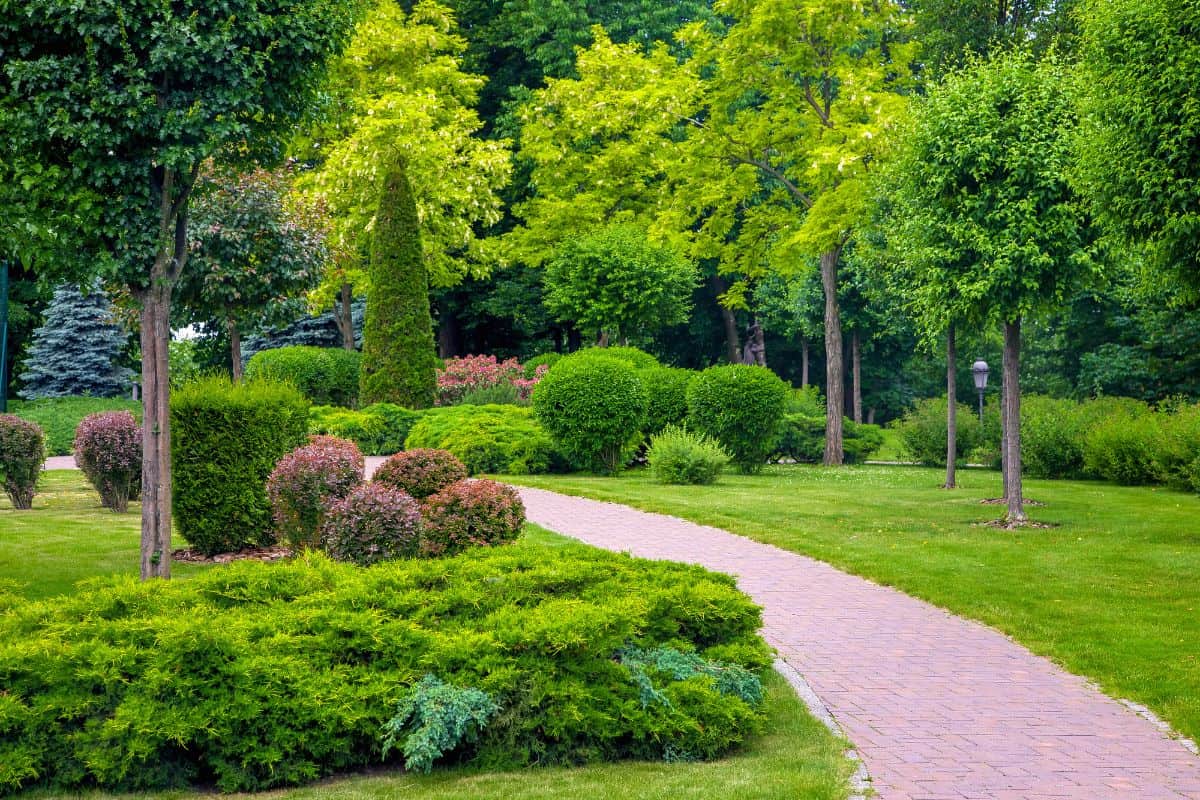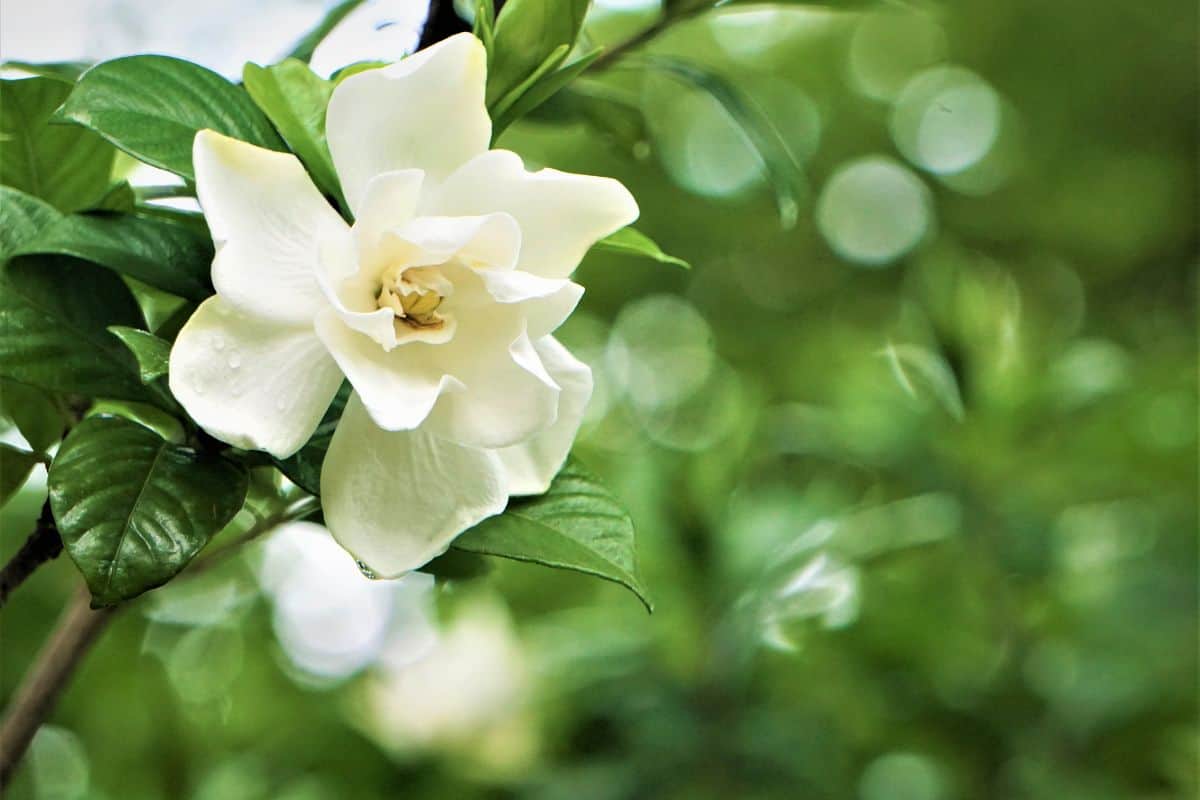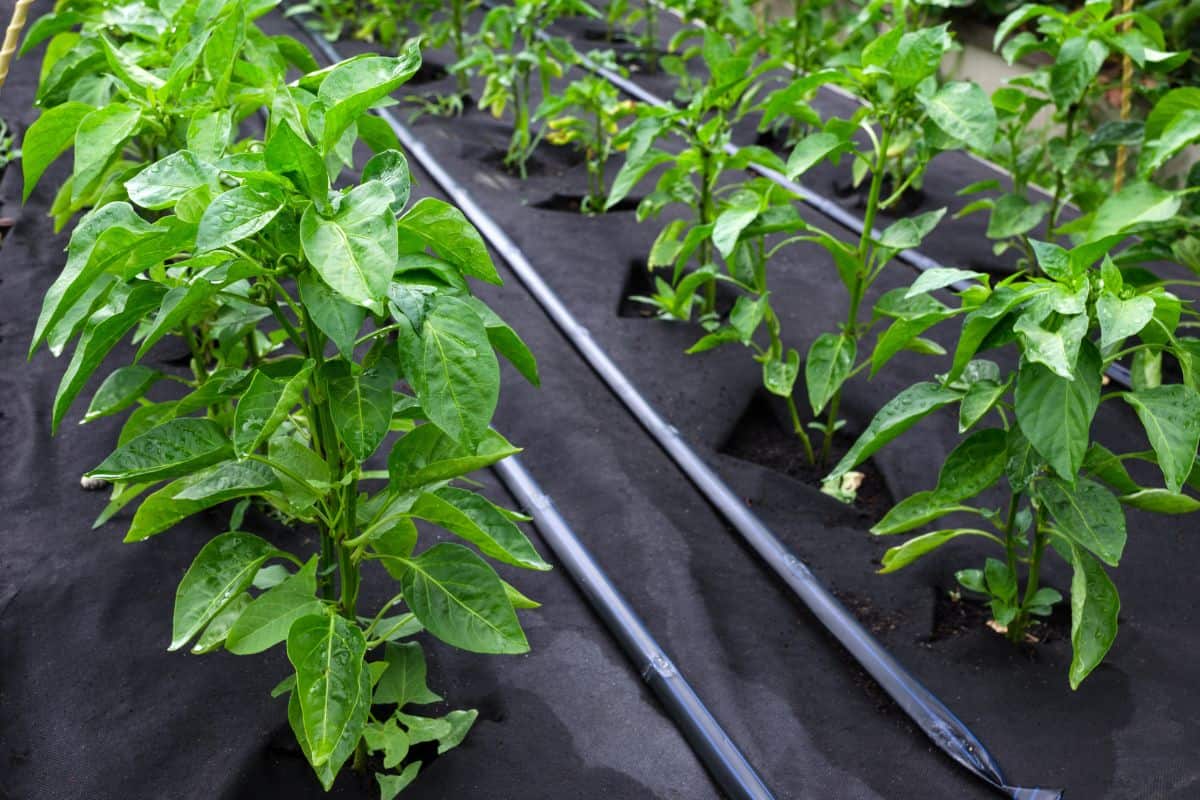Gardenias are a popular addition to a landscape, yard, or garden due to their fragrant flowers and attractive blooms. A common concern for most plant enthusiasts is whether their foliage remains green all year. We have researched if gardenias are evergreen and here is what we have found.
All gardenias are evergreen shrubs and small trees that retain their leaves all year round. However, exposure to low temperatures and frigid conditions causes their foliage to discolor and wilt. This is especially true for non-cold hardy varieties.
Proper care and maintenance are necessary to maintain optimal growth. In this article, we will talk about the difference between deciduous and evergreen, gardenias as evergreen plants, and the ways you can keep your plant healthy and attractive during the winter months.

Difference Between Evergreen And Deciduous

Before we determine if gardenias are evergreen plants, it is important to understand the difference between the two.
Generally, plants are categorized as evergreens or deciduous. It is important to note a plant’s characteristics since it will greatly impact a landscape, yard, or garden. Secondly, the plant’s growth cycle determines how it adapts to the environment and the changing seasons.
Evergreen and deciduous are terms that differentiate plants based on their physical attributes, natural habitat, and capacity to withstand temperature changes. However, the main distinction between the two is evident in their leaves.
Evergreen Plants
Evergreens are exposed to tropical, temperate climates that have consistent conditions for their growth and development. The term pertains to plants or trees with green foliage throughout the year. They have smaller leaves as compared to deciduous plants.
In their natural habitat, they are not typically exposed to colder temperatures and frigid conditions. Since they are tropical plants, they receive enough sunlight and nutrients to sustain themselves throughout the year, and as such, they do not need to shed their leaves as seasons change.
Note that evergreen plants gradually lose or shed only a portion of their foliage every year – old leaves are replaced by new growth.
The process could happen fast or take some time, depending on the cultivar. Nevertheless, plants classified as evergreen do not shed leaves all at once.
Deciduous Plants
Deciduous plants have to survive the extreme changes in weather conditions, so, they exhibit lush growth during the summer and tend to lose their foliage during the colder months.
The leaves fall off the plant to adapt to changing temperatures and frigid conditions.
During the winter, it is difficult for the plant to sustain itself if the leaves are in place – not to mention the damage the foliage will receive when exposed to low temperatures.
Since they have broader leaves, the plant is capable of storing enough energy and nutrients for the incoming winter.
Note that evergreens find it difficult to survive in the natural habitat of deciduous plants. Gardenias are a perfect illustration that exemplifies this situation.
Gardenias Are Evergreen Plants

Gardenias are a native of the tropical regions and are popular because of their fragrant white flowers and deep green foliage. They are classified under the category of evergreen plants.
During the course of the year, it will gradually lose its leaves and replace them with new growth as the foliage matures. If leaves began to shed all at once, then your plant may have been infested or exposed to extremely low temperatures.
Since it is an evergreen, the plant might find it difficult to survive the cold seasons.
Gardenias are best planted in hardiness zones 8 to 11 since the climate in these regions is most suitable for their growth. Because of its sensitive nature, gardeners and plant enthusiasts alike find it fairly difficult to care for and maintain.
Several cultivars that exist within the Americas came from the African, South Pacific, and Asian regions. There are varieties already adapted to the cold weather. However, keep in mind that since gardenias are classified as evergreens, frigid conditions and a wet climate can do considerable damage to the plant.
Which Gardenia Varieties Are Considered As Cold-Hardy?
There are over 200 known species of gardenia, and of these recorded varieties, only a few are identified to withstand the cold. Hardy cultivars can be grown in hardiness zone 7. However, they will not be able to survive as outdoor plants in regions beyond the specified zone.
Here are a few varieties that are recognized to survive outside tropical regions:
- Kleim’s Hardy Gardenia
- Chuck hayes
- Frostproof Gardenia
- Daisy
- Heaven Scent
- Pinwheel
- Celestial Star
Although the mentioned varieties are able to withstand the cold, they are still susceptible to frost damage when exposed to frigid conditions.
Do Gardenias Lose Their Leaves In The Winter?

Gardenias are evergreen plants that do not lose their leaves in the winter. However, exposure to frigid conditions will cause the plant to shed some leaves and make its foliage brown or black. In most instances, the stems and leaves become brittle.
Are Gardenias Evergreen In The Winter?
With proper overwintering care, gardenias may remain healthy and evergreen during winter. Provide the plant with its required growing conditions.
Can Gardenia Plants Survive Winter?
Gardenias can survive winter as long as they are taken care of and given the proper conditions to live and thrive. If, however, the plant had been damaged by the winter frost, it can still regrow, provided that the roots are still intact.
Wait till new growths emerge from the plant base, which may take several weeks or until the middle of spring. Prune dead branches up to the point where new shoots appear.
Remember to only prune when freezing temperatures end to protect your plant from getting damaged.
How To Keep Your Gardenias Evergreen Even Through The Winter
Always Check The Weather Update
Note that gardenias are fairly sensitive to temperature fluctuations. You must be aware and updated on any weather changes that may occur during the winter season. By doing so, preparations before an expected freeze can be done and completed accordingly.
Be cautious of snowfalls in spring. The buds are most susceptible to damage if exposed to frost.
Hydrate The Plant Before A Winter Freeze
If the topsoil seems dry, be sure to thoroughly water your plant at least three days before a predicted winter freeze in your area. A moist environment can retain heat well and protect roots from frost damage.
However, make sure the soil drains well to avoid pooling and stagnation that will otherwise freeze and kill the plant.
Cover The Plant With A Garden Fabric

Garden fabrics are mainly used to replicate the climate to which plants are accustomed to.
The materials provide optimal conditions beneficial to the plant and, incidentally, protect it against frigid conditions. Be sure to use covers specific to winter protection. Plastics, blankets, and tarps might be used as alternatives.
One way to use the material is by gently placing the cover over the shrub. You can opt to install wooden or metal structures as foundations for the garden fabric. Be sure that the plastic covers the entirety of the plant to provide the best possible protection.
Check out Freeze Protection Blanket For Cold Weather on Amazon.
Place Container-Grown Gardenia Indoors
Container-grown plants should be kept inside your home or a shed. You can surround them with other plants to keep the environment humid and place them near a window where they can receive their required sunlight exposure.
Create A Mini Greenhouse
A greenhouse may be the best way to simulate the environment for healthy and flowering gardenias. There are simple and effective ways to duplicate their effect without building an actual structure.
A greenhouse is basically designed to allow light to enter a plant’s environment while maintaining the temperature inside the arrangement. You could create your own structure by using plastics, glass, or nets.
The dimensions may not necessarily require a large canopy since a smaller structure may well duplicate the effects of a greenhouse.
In Closing
A gardenia’s foliage remains lush and green all throughout the year as long as they are provided with proper growing conditions, especially during the winter months. We hope the article helped clarify if gardenias are evergreen plants and how to properly take care of them amidst frigid conditions.
You might also be interested in these topics:

